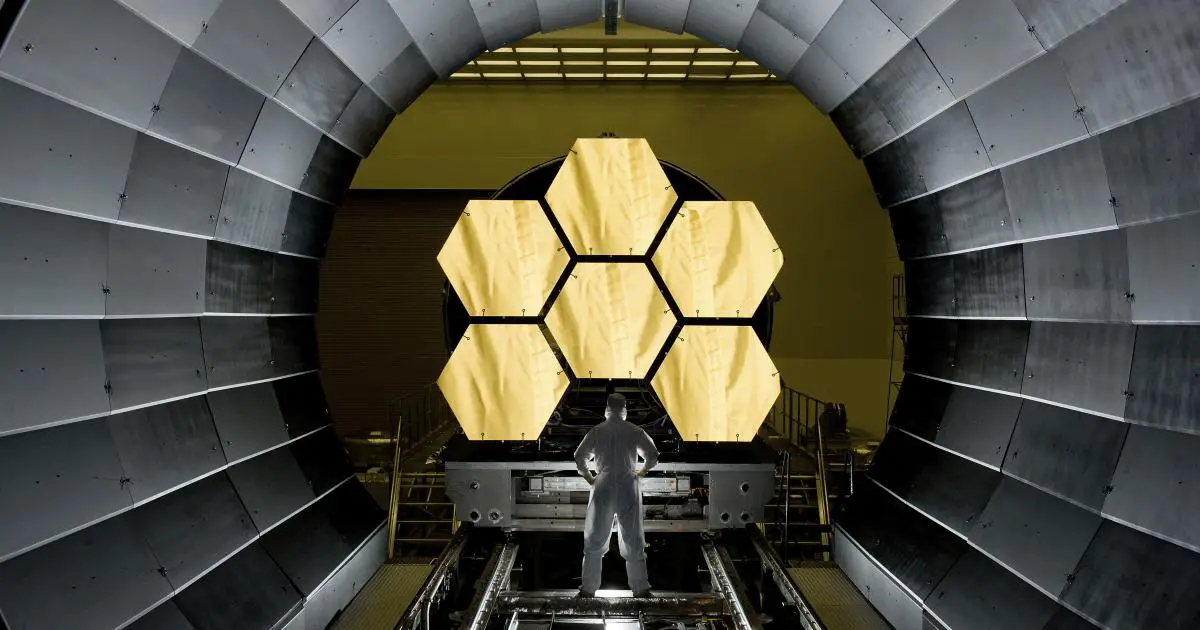Webb's Groundbreaking Discoveries in Exoplanet Atmospheres
The James Webb Space Telescope has made significant discoveries in exoplanet atmospheres. Using transmission spectroscopy, Webb detected unusual chemical markers in the TRAPPIST-1 system, 40 light-years away. High concentrations of oxygen, methane, and chlorofluorocarbons (CFCs) were identified on several Earth-sized planets. CFCs are particularly noteworthy as they don't form naturally without industrial processes.
Webb's infrared spectrometers confirmed these findings through multiple observations. On TRAPPIST-1e, atmospheric pollution levels, especially CFCs, could not be attributed to known geological or biological processes, suggesting an artificial origin.
Another promising planet is K2-18b, 120 light-years from Earth. Webb's analysis revealed dimethyl sulfide (DMS), a byproduct of life on Earth. Higher concentrations of DMS than on Earth might indicate a larger biological presence.
These discoveries offer compelling evidence in the search for extraterrestrial intelligence. The presence of technosignatures like CFCs and DMS could indicate that alien civilizations exist but are rare or short-lived, potentially addressing the Fermi Paradox.

Further Findings and Implications
Webb's scrutiny of WASP-39b, a Saturn-like planet 700 light-years away, revealed sulfur dioxide (SO2) in unusually high concentrations. This molecule is a byproduct of industrial activity, particularly combustion processes. The detection of SO2 highlights the potential for industrial markers to appear even in extreme conditions.
Amedeo Balbi and Adam Frank have emphasized the significance of oxygen levels when hunting for technosignatures. They argue that a planet's atmosphere should contain at least 18% oxygen to facilitate higher technology. This insight could help prioritize future SETI efforts towards systems with higher probabilities for technological societies.
The combination of chemical signals on TRAPPIST-1e, such as the coexistence of methane with CFCs, points to controlled industrial processes rather than naturally occurring atmospheric phenomena. This complex interplay of molecules provides more robust evidence for potential extraterrestrial activity.
Despite these encouraging observations, the scientific community remains cautious. Laura Kreidberg from the Max Planck Institute for Astronomy noted the need for rigorous follow-up observations to substantiate these potential technosignatures.
Current follow-up studies aim to refine our understanding. For example, new observations will focus on K2-18b using advanced Webb instruments better suited for detecting DMS without interference from overlapping methane signals.
Closer to home, missions like NASA's Europa Clipper expect to investigate Jupiter's icy moon Europa for similar signatures. These collaborative efforts underline our growing technological prowess in the quest to find life beyond Earth.
Webb's legacy extends beyond its immediate discoveries. It symbolizes humanity's unyielding curiosity and technological advancement in the search for extraterrestrial life. Each detection, whether substantiated or refuted, transforms the landscape of astrobiology and sets the path for future explorations.

Implications and Future Directions
The implications of Webb's discoveries are significant for our search for extraterrestrial life and challenge existing paradigms like the Fermi Paradox. If the identified technosignatures are indeed the result of alien industrial activities, it suggests that advanced civilizations might be rare or transient. This aligns with the hypothesis that such civilizations could fail to survive long enough to engage in galactic colonization. Alternatively, technologically advanced societies might choose not to make contact due to distinct cultural or survival strategies.
These findings reaffirm the technological leap forward represented by the James Webb Space Telescope, with its unmatched ability to detect and analyze the atmospheric compositions of distant worlds. By focusing on detecting high oxygen levels, future SETI research could become more efficient, potentially prioritizing planets most likely to support advanced life forms.
Future Missions and Observatories
- NASA's Habitable Worlds Observatory (late 2020s or early 2030s)
- European Space Agency's PLATO mission
- Giant Magellan Telescope
- Extremely Large Telescope
These upcoming missions and telescopes will build on Webb's legacy, offering enhanced capabilities for exoplanet exploration and high-resolution spectroscopy.
Follow-up research, especially on promising planets like K2-18b, will leverage advanced Webb instruments capable of better isolating molecular signatures. Detailed studies of TRAPPIST-1e focusing on its atmospheric interactions could help confirm or refute the presence of industrial activities. Missions scheduled to explore our solar system, such as Europa Clipper and potential missions to Enceladus, could also yield critical data on the potential for life within our cosmic neighborhood.
The discovery of potential technosignatures with the James Webb Space Telescope represents a significant moment in astrobiology and SETI research, reshaping our understanding of life in the universe and spawning an era of targeted, strategic exploration efforts to verify these findings.

- Lustig-Yaeger J, et al. Earth as a Transiting Exoplanet: A Validation of Transmission Spectroscopy and Atmospheric Retrieval Methodologies for Terrestrial Exoplanets. arXiv preprint. 2023.
- Balbi A, Frank A. The oxygen bottleneck for technospheres. Nature Astronomy. 2023.
- Kreidberg L, et al. A precise water abundance measurement for the hot Jupiter WASP-39b. Science. 2018;359(6371):189-191.
![]()

Great article! I really appreciate the clear and detailed insights you’ve provided on this topic. It’s always refreshing to read content that breaks things down so well, making it easy for readers to grasp even complex ideas. I also found the practical tips you’ve shared to be very helpful. Looking forward to more informative posts like this! Keep up the good work!